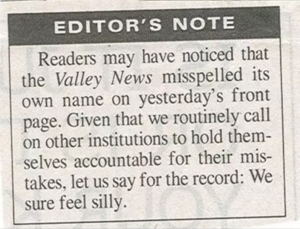Introducing the Correx tool — and two case studies
 We’re happy to report that our journalism corrections tool — helping news organizations send story corrections and major updates down the same social media paths as the original stories — is now in the field for testing.
We’re happy to report that our journalism corrections tool — helping news organizations send story corrections and major updates down the same social media paths as the original stories — is now in the field for testing.
Ted Han, our amazing software developer, has been working hard to combine a data-driven “back end” with ease of use for the people who are testing and, we hope, will ultimately be deploying this tool in their news flow. Several key features are available now with many more to come.
Partner newsrooms — including several in the McClatchy media group’s central-U.S. region and Uruguay’s largest publisher — have been putting Correx, our web-based software, through its paces. We’re getting excellent feedback, and see great potential.
From the beginning, we’ve envisioned Correx as a key way to help news organizations improve transparency and more fully engage with their communities. Straightforward corrections of mistakes are a vital kind of transparency, and can boost trust.
Because so much of what journalists publish reaches people via social media, we designed Correx to help journalists a) know better who’s sharing their work; b) easily correct/update widely shared stories; and c) communicate efficiently with sharers to encourage them to re-share the corrections and updates.
We’ve created a “users guide” of an early Correx version. It explains how the tool works. In this post, we want to show how several news organizations have put it into action.
Kansas City Star
Last month, McClatchy’s Kansas City Star became the first newsroom to use Correx. In one of its first tests, it updated a coronavirus article, a topic that demands frequent updates given the fast-moving nature of this crisis.
Here’s the original tweet:
Kansas City area has 3rd consecutive day of triple-digit rise in new COVID-19 cases https://t.co/FMrPCsrUDZ
— The Kansas City Star (@KCStar) June 4, 2020
 One of the people who shared the story was @BluebirdsofMO. The tweet had five comments, 17 retweets and 15 likes.
One of the people who shared the story was @BluebirdsofMO. The tweet had five comments, 17 retweets and 15 likes.
Several days later, an editor at the Star used Correx to find out who had shared the original story. The editor then, also using Correx, posted an update along with replies to some of the sharers with significant followings.
(Notice, in the update, the “Correx” link next to the time and date; Twitter tells you what software was used to post individual tweets.)
Needless to say, the most gratifying part of the exercise for the Star newsroom people was the reply thanking the organization for its “outstanding journalism” — an assessment with which we agree.
Eric Nelson, McClatchy’s Central regions grown editor, has been our primary contact at the Star since the project began. We asked him how it’s going from their perspective. His reply:
The testing of the corrections tool with the ASU News Co/Lab has been incredibly valuable on a couple of fronts. Of course, we always are aiming to be as transparent as possible with our audience, and this new corrections tool puts us in a better position to communicate with digital users when sources have changes in a story or something needs to be addressed immediately.
But it also has provided us with a great weapon in this fast-moving news cycle with COVID-19 and the landscape of protests. We are able to reconnect with our engaged audience and give them immediate updates on each developing story as it happens.
Readers have been very appreciative of our communication with the tool and have even thanked us for the updates and our work. That is incredibly rewarding.
El País
Uruguay’s largest news organization is headed by Martín Aguirre, who spent an academic year at ASU as part of the State Department-sponsored Humphrey Fellowships (part of the Fulbright program that brings foreign scholars and professionals to the U.S. each year).
He and his social media editor, Matías Rocha, saw the potential in the Correx tool during a video call last month, and they immediately put it to use in their own work.
Here’s the El País correction.
Corrección: Aduanas aclara que no hay cambios en el régimen de compras al exterior por Internet. Este artículo ha sido actualizado con nueva información https://t.co/htazIxpjFx
— EL PAÍS (@elpaisuy) July 3, 2020
Rocha posted a Twitter thread explaining the newsroom’s use of Correx:
En @elpaisuy estamos probando una herramienta en Twitter que permite el tracking de quienes comparten nuestros artículos. ¿Para qué? ?
— Matías Rocha (@matiasrocha_) July 4, 2020
If you look at the thread you’ll see that several people replied with praise for the news organization. The news organization’s use of Correx, Rocha tells me, “generated surprise among many and positive comments from people who normally don’t have a positive opinion of us or our work.” (Of course, he added, there were negative comments from people who don’t like anything El País does.) We’re looking forward to watching how McClatchy and El País, and other newsrooms that are becoming testers, use Correx. We’re getting feedback on how we can improve it to make their work more efficient — our list of bugs to squash and features to add is both daunting and exciting. If your newsroom is interested in testing Correx, let us know.
— Sebastián Auyanet (@Sebauyanet) July 4, 2020
Dan Gillmor is a longtime participant in new media and digital media literacy. He’s author of the 2009 book, Mediactive, discussing media literacy in the digital age from a journalist’s perspective.
